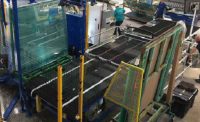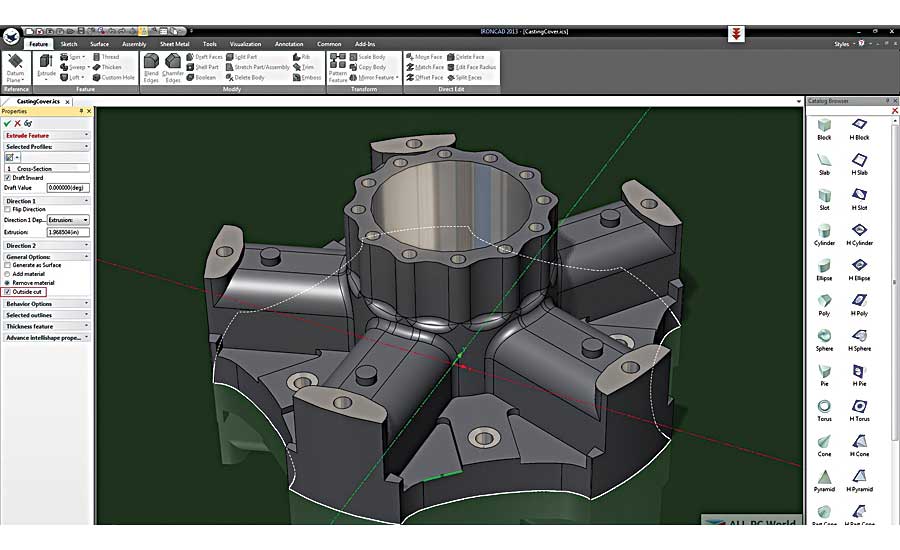Versatile Software Benefits Equipment and Part Designers




Designing machines is very different from designing parts, yet IronCAD LLC’s software is versatile enough to help companies that need to perform either task. Founded in March 2001, IronCAD includes numerous 3D modeling tools in its Design Collaboration Suite (DCS) to significantly improve the productivity of designers and engineers.
Schnaithmann GmbH builds specialty machines for automated assembly, material handling and metalworking. Its engineers have many years of design expertise, and they place a great emphasis on making sure that each machine features high-quality components.
A few years ago, Schnaithmann was looking for a way to help its sales team present 3D machine design concepts to customers. The company saw this as a way for salespeople to more accurately provide customers with the exact machine they wanted, as well as to more quickly secure orders.
After evaluating various CAD systems, Schnaithmann decided that DCS was a perfect fit. The company realized that DCS could be used in machine design, as well as many other areas of their business, according to Andreas Schnitzer, senior designer at Schnaithmann.
On the sales side, representatives visit their customers onsite and use laptops that run “lite” versions of DCS. The salespeople create bills of materials, pricing sheets, and machine renderings and animations, making it easier to get the customer to sign-off on an approved design during the first visit.
In house, designers use all or parts of the suite as needed. IronCAD, a DCS component, offers drag-and-drop functionality and the patented TriBall tool. A smart 3D cursor, TriBall is a positioning tool for moving elements into and around the model. The TriBall tool has orientation controls at its center. These tools offer quick axis positioning of an object relative to selected surfaces, edges or points on another object. Positioning with these controls can be accomplished relative to any of an object’s three axes, just as with the translation controls.
IronCAD also has numerous catalogs that let users rapidly build and store libraries of completed parts and assemblies in 3D drawings. These catalogs help designers facilitate rapid and modular machine creation to further benefit Schnaithmann’s customers.
Another company benefitting from DCS is Huntsville, AL-based Multiple Discipline Technology Group (MDTG). The MDTG provides information technology, engineering, tooling and fabrication, environmental and health safety, and homeland security services to companies in the United States.
MDTG engineers often complete projects with tight deadlines. But a few years ago, they faced a one-week deadline to produce two complete part designs for Oakridge National Laboratories as part of a contract bid.
Using DCS’s direct face modeling technology, the MDTG engineers were able to import the geometry saved in the standard file formats provided by Oakridge without losing any accuracy. The engineers then used the software to directly modify non-native geometry and manipulate non-intelligent shapes to conform to their specific designs. This approach helped MDTG win the Oakridge contract.
Since then, the company’s engineers have continued to expand their use of DCS on other projects. They especially like the suite’s editing features, as well as the IntelliShapes and SmartAssembly tools for their simplicity and ability to ensure accurate and streamlined designs.
IntelliShapes are the features that make up a part. These features are intelligent because they contain additional information and properties that traditional features do not contain. Types of IntelliShapes include solid, hole, sheet metal, tools, custom, 2D and 3D, surface and text.
SmartAssembly lets users drop components into position from a catalog or drag components into a specific environment. During either action, shapes intelligently evaluate the nearest
attachment point and precisely move into position there.
For more information on 3D equipment and part design software, call 800-339-7532 or visit www.ironcad.com.
Looking for a reprint of this article?
From high-res PDFs to custom plaques, order your copy today!







